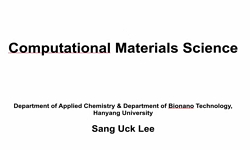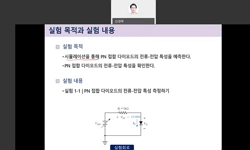This study aims at the status quo that theory is divorced from practice in embedded systems teaching process. A new theory teaching method is proposed that using Proteus as hardware simulation environment and Keil as software design environment. With ...
http://chineseinput.net/에서 pinyin(병음)방식으로 중국어를 변환할 수 있습니다.
변환된 중국어를 복사하여 사용하시면 됩니다.
- 中文 을 입력하시려면 zhongwen을 입력하시고 space를누르시면됩니다.
- 北京 을 입력하시려면 beijing을 입력하시고 space를 누르시면 됩니다.
Teaching and Practice Innovation of Embedded System Design Course Based on Proteus and Keil-electronic Stopwatch as an Example
한글로보기https://www.riss.kr/link?id=A100505542
-
저자
Li Dan ; He Erhu ; Zhang Yanrong ; Zhang Yu
- 발행기관
- 학술지명
- 권호사항
-
발행연도
2015
-
작성언어
English
- 주제어
-
자료형태
학술저널
-
수록면
127-134(8쪽)
- 제공처
-
중단사유
※ eArticle의 서비스 중단으로 원문이 제공되지 않습니다.
-
0
상세조회 -
0
다운로드
부가정보
다국어 초록 (Multilingual Abstract)
This study aims at the status quo that theory is divorced from practice in embedded systems teaching process. A new theory teaching method is proposed that using Proteus as hardware simulation environment and Keil as software design environment. With this new method, in the teaching process, the hardware circuit can be simulated by the software environment. The joint use of Proteus and Keil in Embedded System Design Course teaching is clarified by an example of the design of electronic stopwatch which is using GPIO and timer in ARM7. This instance illustrates the flow and application methods about the joint application of Proteus and Keil in embedded system course teaching and practical application detailedly. By this method, it can stimulated students' interest in learning, and enhance the students' understanding of the principles and application of Embedded System Design. Thereby using this method can also improve the embedded system experiment teaching effect.
목차 (Table of Contents)
- Abstract
- 1. Introduction
- 2. The Teaching and Practice Innovation
- 3. The Building of Simulation Platform
- 4. Conclusion
- Abstract
- 1. Introduction
- 2. The Teaching and Practice Innovation
- 3. The Building of Simulation Platform
- 4. Conclusion
- ACKNOWLEDGEMENTS
- References
동일학술지(권/호) 다른 논문
-
Study on the Method of Closed Loop Control for Gas Engine
- 보안공학연구지원센터
- Xiaocheng Ge
- 2015
-
- 보안공학연구지원센터
- Md. B. Hossain
- 2015
-
Fisher Linear Discriinant Method for Forest Fire Risk Points on Transmission Line
- 보안공학연구지원센터
- Zhou Jing
- 2015
-
- 보안공학연구지원센터
- Qian Hao
- 2015




 eArticle
eArticle






